3.2: Round Fish
- Page ID
- 21273
\( \newcommand{\vecs}[1]{\overset { \scriptstyle \rightharpoonup} {\mathbf{#1}} } \)
\( \newcommand{\vecd}[1]{\overset{-\!-\!\rightharpoonup}{\vphantom{a}\smash {#1}}} \)
\( \newcommand{\id}{\mathrm{id}}\) \( \newcommand{\Span}{\mathrm{span}}\)
( \newcommand{\kernel}{\mathrm{null}\,}\) \( \newcommand{\range}{\mathrm{range}\,}\)
\( \newcommand{\RealPart}{\mathrm{Re}}\) \( \newcommand{\ImaginaryPart}{\mathrm{Im}}\)
\( \newcommand{\Argument}{\mathrm{Arg}}\) \( \newcommand{\norm}[1]{\| #1 \|}\)
\( \newcommand{\inner}[2]{\langle #1, #2 \rangle}\)
\( \newcommand{\Span}{\mathrm{span}}\)
\( \newcommand{\id}{\mathrm{id}}\)
\( \newcommand{\Span}{\mathrm{span}}\)
\( \newcommand{\kernel}{\mathrm{null}\,}\)
\( \newcommand{\range}{\mathrm{range}\,}\)
\( \newcommand{\RealPart}{\mathrm{Re}}\)
\( \newcommand{\ImaginaryPart}{\mathrm{Im}}\)
\( \newcommand{\Argument}{\mathrm{Arg}}\)
\( \newcommand{\norm}[1]{\| #1 \|}\)
\( \newcommand{\inner}[2]{\langle #1, #2 \rangle}\)
\( \newcommand{\Span}{\mathrm{span}}\) \( \newcommand{\AA}{\unicode[.8,0]{x212B}}\)
\( \newcommand{\vectorA}[1]{\vec{#1}} % arrow\)
\( \newcommand{\vectorAt}[1]{\vec{\text{#1}}} % arrow\)
\( \newcommand{\vectorB}[1]{\overset { \scriptstyle \rightharpoonup} {\mathbf{#1}} } \)
\( \newcommand{\vectorC}[1]{\textbf{#1}} \)
\( \newcommand{\vectorD}[1]{\overrightarrow{#1}} \)
\( \newcommand{\vectorDt}[1]{\overrightarrow{\text{#1}}} \)
\( \newcommand{\vectE}[1]{\overset{-\!-\!\rightharpoonup}{\vphantom{a}\smash{\mathbf {#1}}}} \)
\( \newcommand{\vecs}[1]{\overset { \scriptstyle \rightharpoonup} {\mathbf{#1}} } \)
\( \newcommand{\vecd}[1]{\overset{-\!-\!\rightharpoonup}{\vphantom{a}\smash {#1}}} \)
\(\newcommand{\avec}{\mathbf a}\) \(\newcommand{\bvec}{\mathbf b}\) \(\newcommand{\cvec}{\mathbf c}\) \(\newcommand{\dvec}{\mathbf d}\) \(\newcommand{\dtil}{\widetilde{\mathbf d}}\) \(\newcommand{\evec}{\mathbf e}\) \(\newcommand{\fvec}{\mathbf f}\) \(\newcommand{\nvec}{\mathbf n}\) \(\newcommand{\pvec}{\mathbf p}\) \(\newcommand{\qvec}{\mathbf q}\) \(\newcommand{\svec}{\mathbf s}\) \(\newcommand{\tvec}{\mathbf t}\) \(\newcommand{\uvec}{\mathbf u}\) \(\newcommand{\vvec}{\mathbf v}\) \(\newcommand{\wvec}{\mathbf w}\) \(\newcommand{\xvec}{\mathbf x}\) \(\newcommand{\yvec}{\mathbf y}\) \(\newcommand{\zvec}{\mathbf z}\) \(\newcommand{\rvec}{\mathbf r}\) \(\newcommand{\mvec}{\mathbf m}\) \(\newcommand{\zerovec}{\mathbf 0}\) \(\newcommand{\onevec}{\mathbf 1}\) \(\newcommand{\real}{\mathbb R}\) \(\newcommand{\twovec}[2]{\left[\begin{array}{r}#1 \\ #2 \end{array}\right]}\) \(\newcommand{\ctwovec}[2]{\left[\begin{array}{c}#1 \\ #2 \end{array}\right]}\) \(\newcommand{\threevec}[3]{\left[\begin{array}{r}#1 \\ #2 \\ #3 \end{array}\right]}\) \(\newcommand{\cthreevec}[3]{\left[\begin{array}{c}#1 \\ #2 \\ #3 \end{array}\right]}\) \(\newcommand{\fourvec}[4]{\left[\begin{array}{r}#1 \\ #2 \\ #3 \\ #4 \end{array}\right]}\) \(\newcommand{\cfourvec}[4]{\left[\begin{array}{c}#1 \\ #2 \\ #3 \\ #4 \end{array}\right]}\) \(\newcommand{\fivevec}[5]{\left[\begin{array}{r}#1 \\ #2 \\ #3 \\ #4 \\ #5 \\ \end{array}\right]}\) \(\newcommand{\cfivevec}[5]{\left[\begin{array}{c}#1 \\ #2 \\ #3 \\ #4 \\ #5 \\ \end{array}\right]}\) \(\newcommand{\mattwo}[4]{\left[\begin{array}{rr}#1 \amp #2 \\ #3 \amp #4 \\ \end{array}\right]}\) \(\newcommand{\laspan}[1]{\text{Span}\{#1\}}\) \(\newcommand{\bcal}{\cal B}\) \(\newcommand{\ccal}{\cal C}\) \(\newcommand{\scal}{\cal S}\) \(\newcommand{\wcal}{\cal W}\) \(\newcommand{\ecal}{\cal E}\) \(\newcommand{\coords}[2]{\left\{#1\right\}_{#2}}\) \(\newcommand{\gray}[1]{\color{gray}{#1}}\) \(\newcommand{\lgray}[1]{\color{lightgray}{#1}}\) \(\newcommand{\rank}{\operatorname{rank}}\) \(\newcommand{\row}{\text{Row}}\) \(\newcommand{\col}{\text{Col}}\) \(\renewcommand{\row}{\text{Row}}\) \(\newcommand{\nul}{\text{Nul}}\) \(\newcommand{\var}{\text{Var}}\) \(\newcommand{\corr}{\text{corr}}\) \(\newcommand{\len}[1]{\left|#1\right|}\) \(\newcommand{\bbar}{\overline{\bvec}}\) \(\newcommand{\bhat}{\widehat{\bvec}}\) \(\newcommand{\bperp}{\bvec^\perp}\) \(\newcommand{\xhat}{\widehat{\xvec}}\) \(\newcommand{\vhat}{\widehat{\vvec}}\) \(\newcommand{\uhat}{\widehat{\uvec}}\) \(\newcommand{\what}{\widehat{\wvec}}\) \(\newcommand{\Sighat}{\widehat{\Sigma}}\) \(\newcommand{\lt}{<}\) \(\newcommand{\gt}{>}\) \(\newcommand{\amp}{&}\) \(\definecolor{fillinmathshade}{gray}{0.9}\)Amberjack are predators. They feed on pelagic and benthic fish. Their prey also includes squid and crustaceans, as well as sardines and bigeye scad. Younger juvenile jacks tend to feed on plankton and small invertebrates. Greater Amberjacks mature at around 4 years old, and migrate in late spring to early summer (March to June) to reproduce. They migrate to deeper water to spawn, producing their young near shipwrecks or large objects as a safe haven. Females are much larger than males, and have a higher life expectancy. The maximum lifespan for females is 17 years, whilst the average is 10 due to popular demand for them in big game fishing and as a high-quality food fish. Amberjacks are not top of the food chain in their habitat, and therefore are prone to being prey for Yellowfin Tuna, sharks and other larger fish.
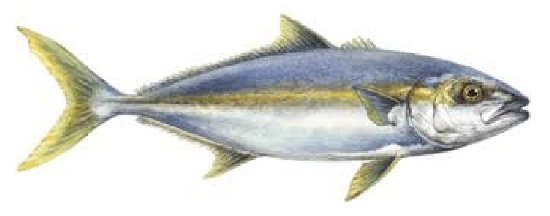
Amberjack
Bass commonly refers to a number of unrelated spiny-finned fish. The better-known freshwater bass varieties (largemouth, smallmouth, redeye and black) are actually members of the sunfish family. They are lean and delicate but, as game, not commercially available in the United States. The saltwater bass varieties (black sea bass and striped bass) are popular commercial item
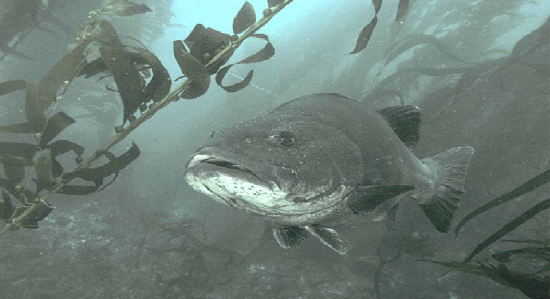
Black Sea Bass
Black sea bass are sometimes referred to as rock sea bass. They have a lean, firm white flesh with a mild flavor and flaky texture. They usually weigh from 11/2 to 3 pounds (720 to 1360 grams) and are most prevalent in the Atlantic Ocean between New York and North Carolina. Black sea bass can be prepared by almost any cooking method and are often served whole in Chinese and Italian cuisines.
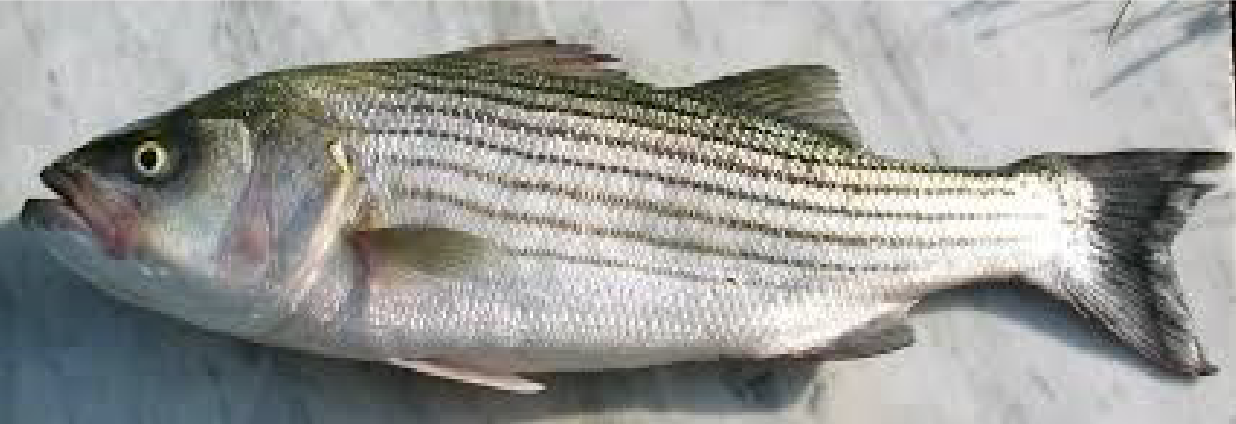
Striped Bass
Striped bass, often erroneously referred to as rockfish, are anadromous. True striped bass cannot be marketed because pollution and overfishing have damaged the supply. A hybrid of striped bass and either white bass or white perch is aqua farmed for commercial use, however. It is this hybrid that food service operations receive as striped bass. Whole fish weigh from 1 to 5 pounds (450 grams to 2.2 kilograms). Striped bass have a rich, sweet flavor and firm texture. They can be steamed, baked, poached or broiled
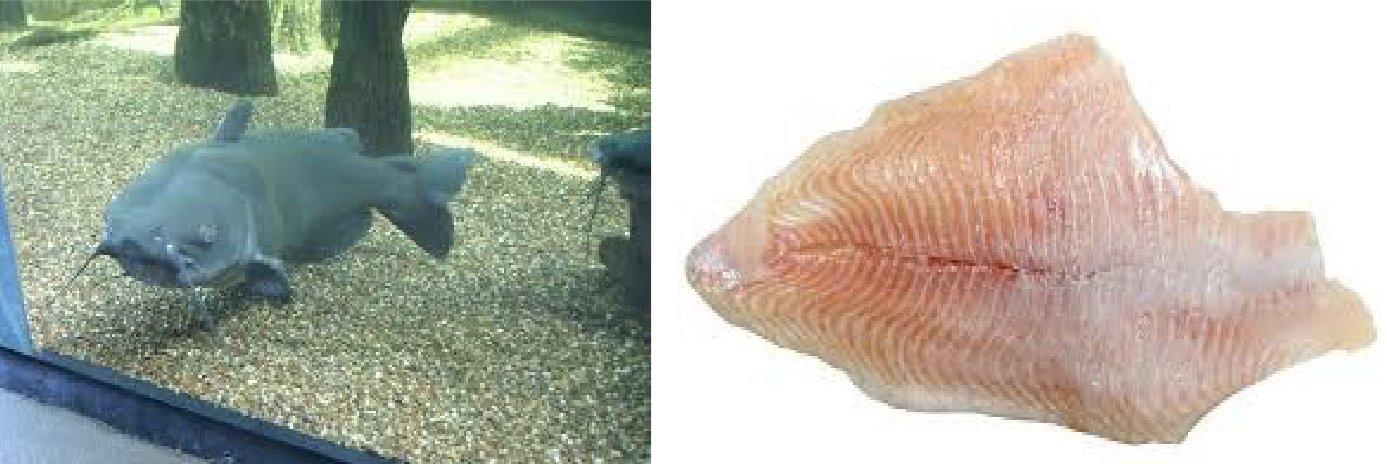
Channel Catfish Catfish Fillet
Catfish are scaleless freshwater fish common in southern lakes and rivers and now aqua farmed extensively. Aquafarm raising eliminates the "muddy" flavor once associated with catfish and ensures a year -round supply. The flesh is pure white with a moderate fat content; a mild, sweet flavor; and a firm texture. Channel catfish are the most important commercially. They usually weigh from 1½ to 5 pounds (720 grams to 2.2 kilograms). The smaller of these fish are known as fiddlers; they are often deep-fried and served whole. Catfish may be prepared by almost any cooking method, but are especially well suited to f1ying. Note that other species are often imported to the United States under the generic name catfish. Only products labeled "U.S. Farm- Raised Catfish" provide the consistent high quality and flavor that consumers have come to expect, however.
The cod family includes Atlantic and Pacific cod as well as Pollock, haddock, whiting and hake. Cod have a mild, delicate flavor and lean, firm white flesh that flakes apart easily. Cod can be prepared by most cooking methods, although grilling is not recommended because the flesh is too flaky.

Atlantic Cod Cod Fillet
Atlantic cod are the best-selling fish in America. They are available fresh, whole or drawn, or cut into fillets or steaks. They are also available frozen and are often used for precooked or pre- breaded sticks or portions. Smoked cod and dried salt cod are also available. Although cod may reach 200 pounds (90 kilograms), most market cod weigh 10 pounds (4.4 kilograms) or less. Scrod is a marketing term for cod or haddock weighing less than 2 pounds (1.1 kilograms) or less than 20 inches (50 centimeters) in length.
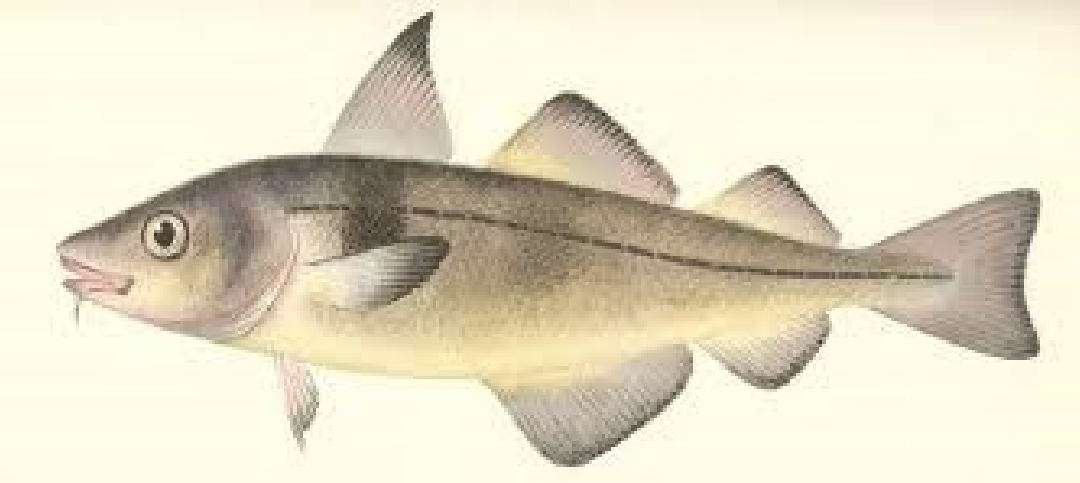
Haddock
Haddock, the second most commercially important fish, look like thin, small Atlantic cod and weigh about 2 to 5 pounds (900 grams to 2.3 kilograms). They have a stronger flavor and more delicate texture than Atlantic cod.
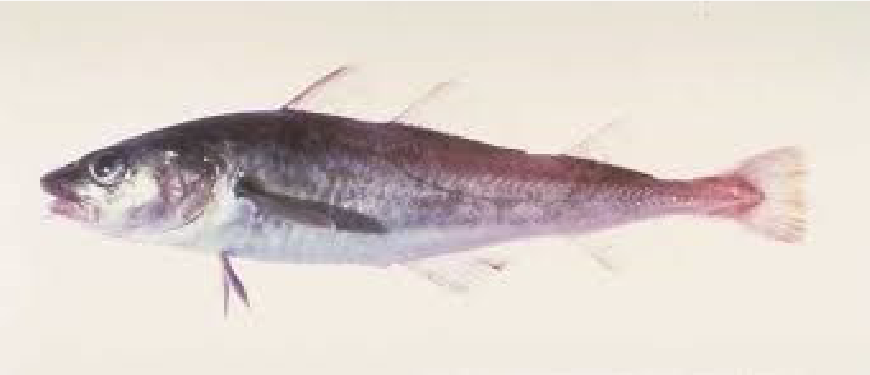
Pacific Cod
Pacific cod, also known as gray cod, are found in the northern Pacific Ocean and are not as abundant as their Atlantic cousins are. Pacific cod are most of- ten available frozen; they should be labeled "true cod" to distinguish them from rock cod and black cod, which are unrelated

Pollock Pollock Fillet
Pollock, also known as Boston blue- fish or blue cod, are plentiful in the northern Atlantic and Pacific Oceans. Their flesh is gray-pink when raw, turning white when cooked. Pollock are often frozen at sea, then reprocessed into surimi. They can also be salted or smoked

Fresh Water Eels
Eels are long, snakelike freshwater fish with dorsal and anal fins running the length of their bodies. (The conger eel is from a different family and has little culina1y significance.) American and European eels are avail- able live, whole, gutted or as fillets. Eels have a high fat content and firm flesh; they are sweet and mildly flavored. Their tough skin should be removed before cooking. Eels may be steamed, baked, fried or used in stews. Baby eels are a springtime delicacy, especially in Spain, where they are pan-fried in olive oil and garlic with hot red peppers. Smoked eels are also available.
The grouper family includes almost four hundred varieties found in temperate waters worldwide. The more common Atlantic Ocean varieties are the yellowfin grouper, black grouper, red grouper and gag; the Pacific
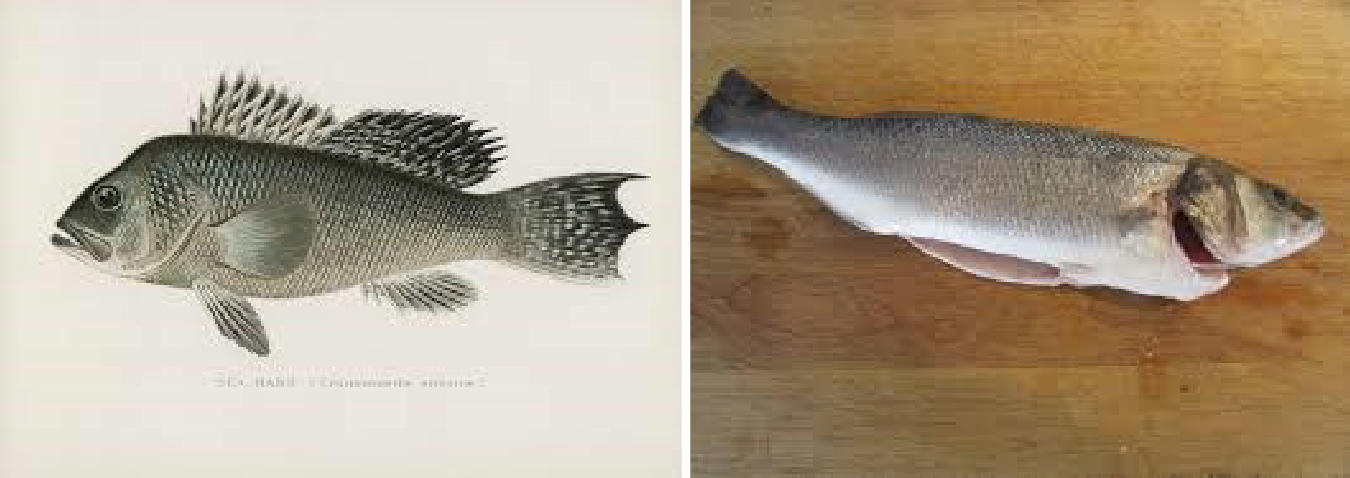
Sea Bass
Ocean varieties are the sea bass (also known as jewfish and different from the black sea bass) and spotted cabrilla. Although some species can reach 800 pounds or more, most commercial varieties are sold in the 5-to 20-pound (2.2-to 8.8-kilogram) range. They have lean white flesh with a mild to sweet flavor and very firm texture. Their skin, which is tough and strongly flavored, is generally removed before cooking. Grouper fillets may be baked, deep-fried, broiled or grilled.

Herring
Herring are long, silvery-blue fish found in both the northern Atlantic and Pacific Oceans. Their strongly flavored flesh has a moderate to high fat content. Whole herring weigh up to 8 ounces (225 grams). Fresh herring may be butterflied or filleted and roasted, broiled or grilled. But because herring are very soft and tend to spoil quickly, they are rarely available fresh. More often, they are smoked (and known as kippers) or cured in brine.
Very young, small herring are known as sardines. They have fatty, oily flesh with a flaky texture. Sardines are usually sold canned, whole or as skinned and boned fillets, or fried or smoked and packed in oil or sauce. Sardines are used primarily for sandwiches and salads
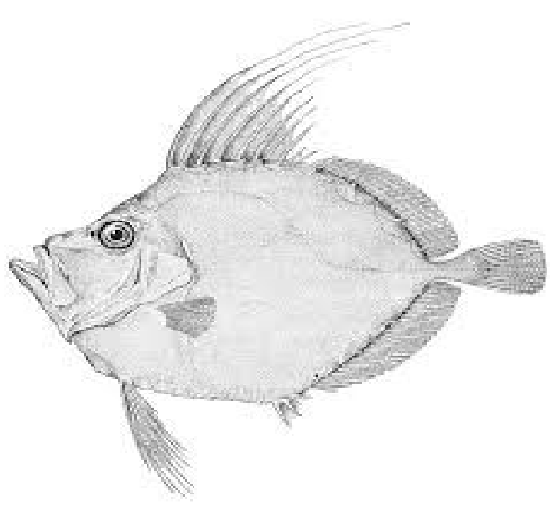
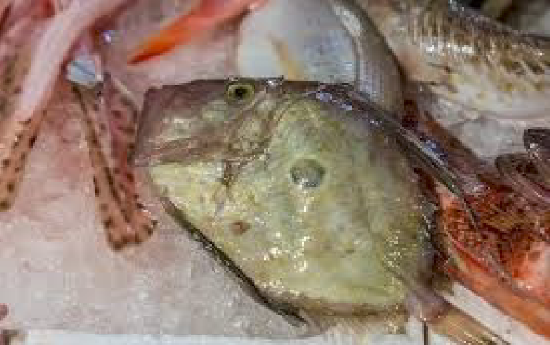
John Dory John Dory at fish market
John Dory, also known as St. Peter’s fish, have a distinctive round, black spot with a yellow halo on each side of the body. Their flesh is white, firm and finely flaked. They may be filleted and prepared like flounder and are a classic bouillabaisse ingredient.
SURIMI
Surimi is made from a highly processed fish paste colored, flavored and shaped to resemble shrimp, lobster, crab or other shellfish. Most surimi is based on Alaskan Pollock, but some blends include varying amounts of real crab, shrimp or other items. Available chilled or frozen, surimi is already fully cooked and ready to add to salads, pasta, sauces or other dishes. Surimi is very low in fat and relatively high in protein. Because of processing techniques, however, it has more sodium and fewer vitamins and minerals than the real fish or shellfish it replaces. Americans now consume more than 100 million pounds of surimi each year, and its popularity continues to grow. The FDA requires that all surimi products be labeled "imitation."
Mackerel of culinary importance include king and Spanish mackerel as well as tuna and wahoo, which are discussed separately later.

Mackerel Mackerel at fish market
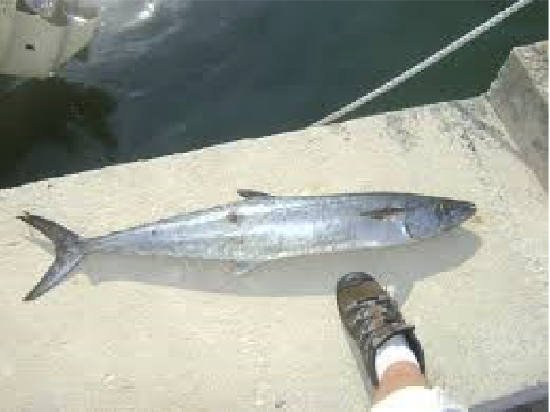
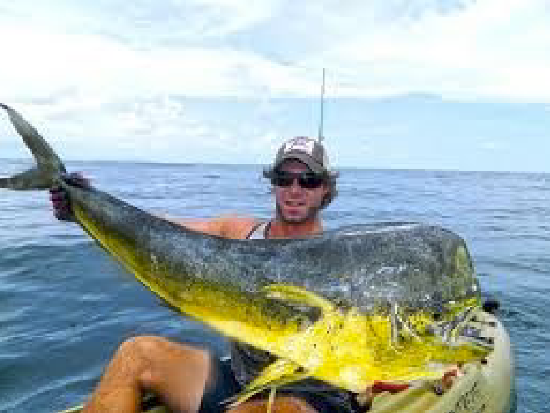
King Mackerel Mahi Mahi
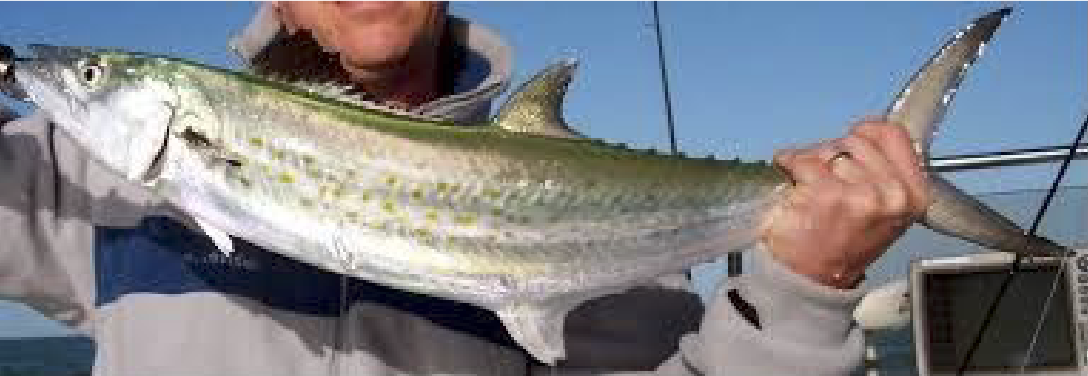
Spanish Mackerel
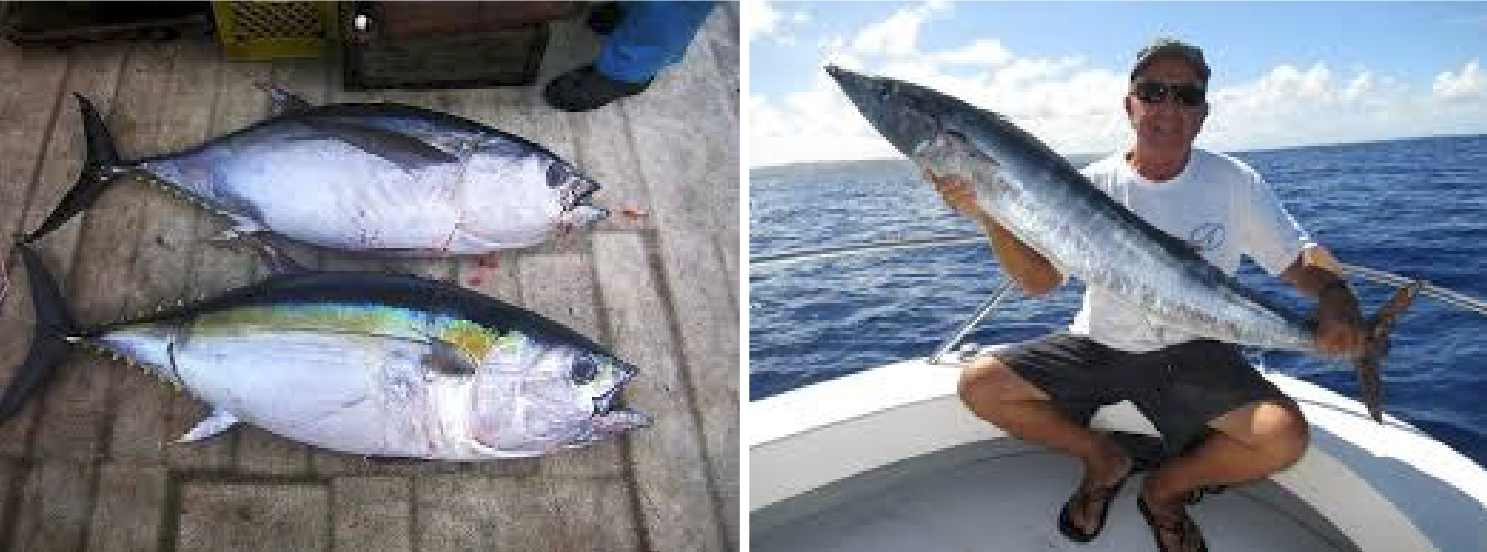
Bigeye Tuna Wahoo
The species known as Atlantic and Pacific mackerel are not generally used for food because of their small size and high fat content. Mackerel flesh has a high fat content, gray to pink coloring, a mild flavor and flaky texture. The flesh becomes firm and off-white when cooked. Mackerel are best broiled, grilled, smoked or baked. Mahi-mahi is the more commonly used name for dolphin or dolphinfish; this Hawaiian name is used to distinguish them from the marine mammal of the same name. (Dolphins and porpoises are marine mammals.) Also known by their Spanish name, Dorado, mahi-mahi are brilliantly colored fish found in tropical seas. Mahi-mahi weigh about 15 pounds (6.6 kilograms) and are sold whole or as fillets. Their flesh is off-white to pink, lean and firm with a sweet flavor. Dolphinfish can be broiled, grilled or baked. The meat may become dry when cooked, however, so a sauce or marinade is recommended.
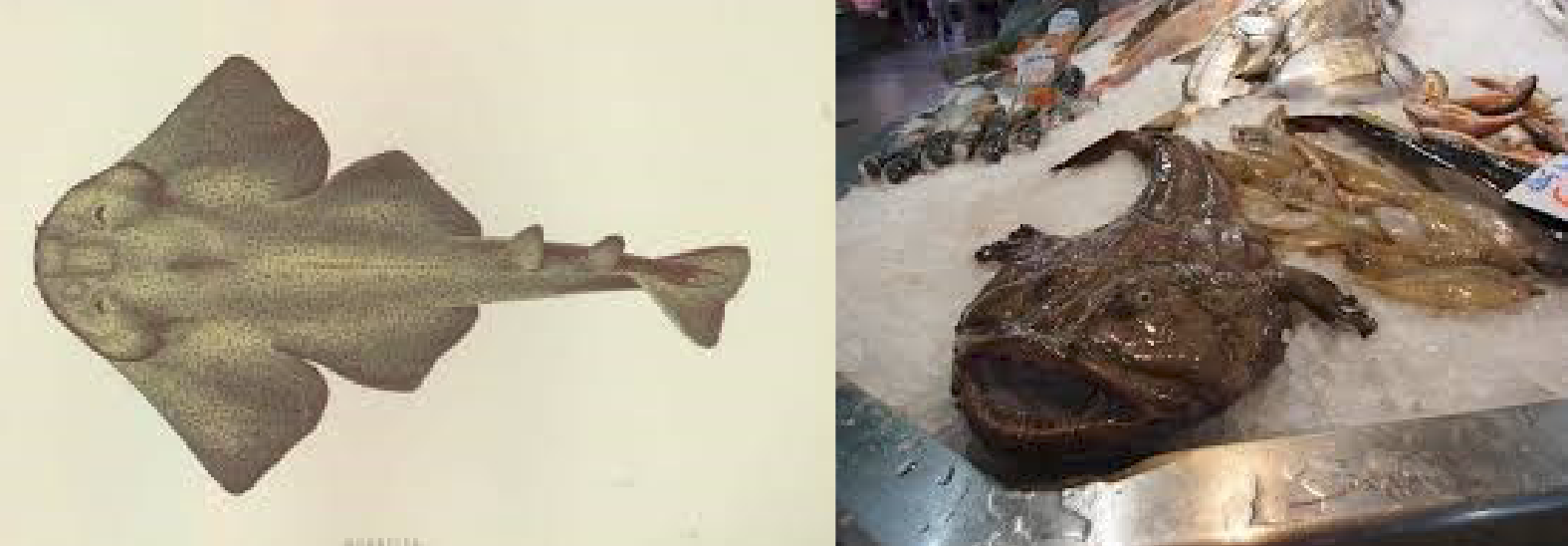
Monkfish Monkfish at Market
Monkfish are also known as anglerfish, goosefish, rape, and lotte. These extraordinarily ugly fish are rarely seen whole, for the large head is usually discarded before reaching market. Only the tail is edible; it is available in fillets, fresh or frozen. The scaleless skin must be removed. The flesh is lean, pearly white and very firm. Its texture and flavor have earned monkfish the nickname of "poor man's lobster." Monkfish absorb flavors easily and are baked, steamed, fried, grilled or broiled. They are also used for stews and soups.

Orange Roughy
Orange roughy are caught in the South Pacific off the coasts of New Zealand and Australia. They have bright orange skin and firm, pearly-white flesh with a low fat content and extremely bland flavor. Orange roughy are usually marketed as skinless, boneless frozen fillets, averaging 6 to 8 ounces (140 to 225 grams) each. Widely available year-round, they can be broiled, steamed, grilled or prepared in the same manner as cod.
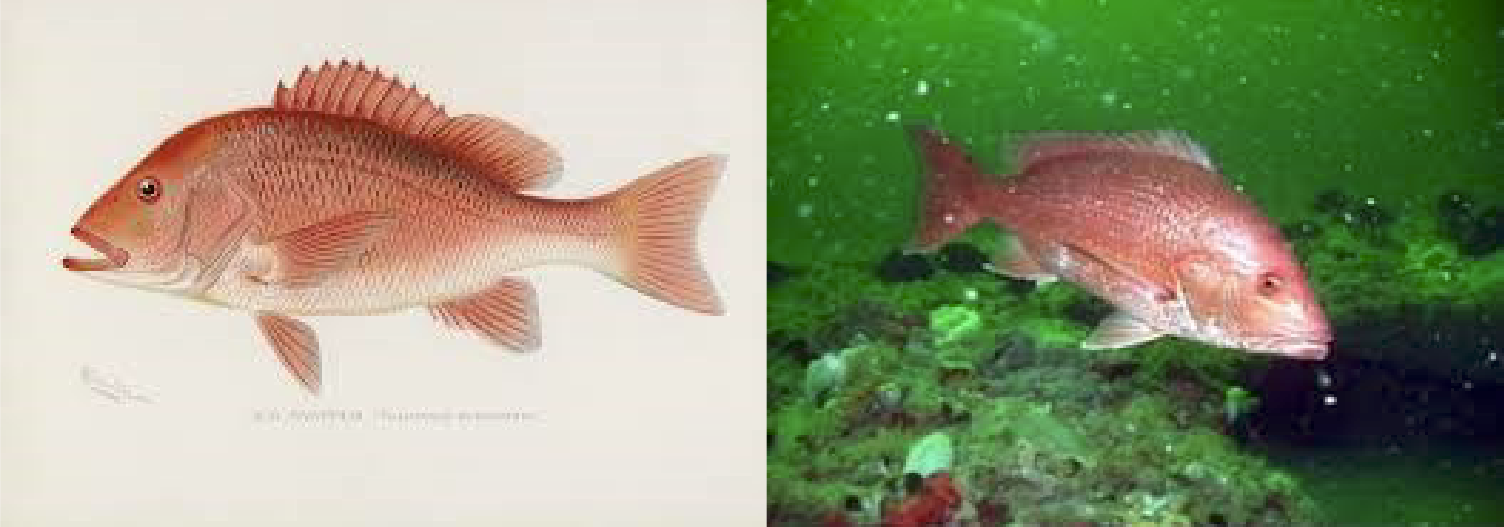
Red Snapper
Red snapper is also known as the American or northern red snapper. Although there are many members of the snapper family, only one is the true red snapper. Red -skinned rockfish are often mislabeled as the more popular red snapper or Pacific snapper, a practice that is currently legal only in California. True red snapper have lean, pink flesh that becomes white when cooked; it is sweet-flavored and flaky. They are sold whole or as fillets with the skin left on for identification. Red snapper may reach 35 pounds, but most are marketed at only 4 to 6 pounds (1.8 to 2.7 kilograms) or as 1- to 3-pound (450-gram to 1.3-kilogram) fillets. Red snapper can be prepared using almost any cooking method. The head and bones are excellent for stock.
Salmon flourish in both the northern Atlantic and Pacific Oceans, returning to the freshwater rivers and streams of their birth to spawn. Salmon flesh gets its distinctive pink-red color from fat-soluble carotenoids found in the crustaceans on which they feed.
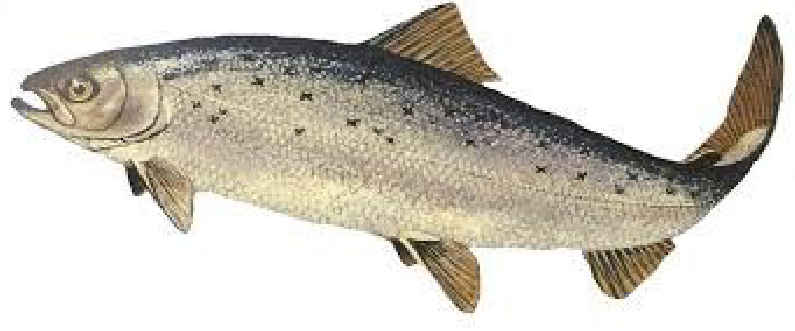
Atlantic Salmon
Atlantic salmon is the most important commercially, accounting for one-fourth of all salmon produced worldwide. Extensive aquafarms in Norway, Canada and Scotland produce a steady supply of Atlantic salmon. For marketing purposes, the fish's point of origin is often added to the name (for example, Norwegian, Scottish or Shetland Atlantic salmon). Atlantic salmon have a rich pink color and moist flesh. Their average weight is from four to 12 pounds (1.8 to 5.4 kilograms). Wild Atlantic salmon are almost never available

Chinook or King Salmon
Chinook or king salmon from the Pacific are also highly desirable. They average from five to 30 pounds (2.2 to 13.2 kilograms) and have red-orange flesh with a high fat content and rich flavor. Like other salmon, their flesh separates into large flakes when cooked. Chinooks are often marketed by the name of the river from which they are harvested (for example, Columbia, Yukon or Copper Chinook salmon). They are distinguished by the black interior of their mouth.

Coho Salmon
Coho or silver salmon have a pinkish flesh and are available fresh or frozen, wild or from aquafarms. Wild Coho average from 3 to 12 pounds (1.3 to 5.4 kilograms), while aqua farmed Coho are much smaller, usually less than 1 pound (450 grams). Other varieties, such as chum, sockeye, red, blueback and pink salmon, are usually canned but may be available fresh or frozen.
Salmon can be prepared by many cooking methods: broiling, grilling, poaching, steaming or baking. Frying is not recommended, however, because of their high fat content. Salmon fillets are often cured or smoked. Gravlax is salmon that has been cured for one to three days with salt, sugar and dill. Lox is salmon that has been cured in a salted brine and then, typically, cold-smoked. Nova is used in the eastern United States to refer to a less salty, cold-smoked salmon.

Sea Bream
Sea bream is the name given to a large family of fish found in the Mediterranean (gilt-head bream), the Caribbean (porgy), the Atlantic (black sea bream) and the Indo -Pacific (emperor and snapper). Because the marketing term bream is applied to so many different fish, it is difficult to generalize about their characteristics. Some have very few bones, others have quite a few; some have a rich flavor, others are very mild; some weigh up to 20 pounds (9.6 kilograms), others rarely exceed 5 pounds (kilograms). Black sea bream, for example, is a good pan fish, reaching only 35 cm in length and weighing less than 6 pounds (2.9 kilograms). Their flesh is firm, mild and low in fat. Also marketed as Thai snapper, they are good for baking, grilling or frying.

Mako Shark Sand Sharks
Sharks provide delicious eating, despite their less-than-appealing appearance and vicious reputation. Mako and blue sharks are the most desirable, with mako often being sold as swordfish. Sand shark, sharp -nose, blacktip, angel and thresher are also available commercially. Most sharks have lean flesh with a mild flavor and firm texture. The flesh is white with tinges of pink or red when raw, turning off-white when cooked. Makos weigh from 30 to 250 pounds (13.S to 112.5 kilograms); other species may reach as much as 1000 pounds (450 kilograms). All sharks have cartilaginous skeletons and no bones; therefore, they are not actually fish, but rather marine invertebrates. Sharks are usually cut into loins or wheels, then into steaks or cubes. They can be broiled, grilled, baked or fried. An ammonia smell indicates that the shark was not properly treated when caught. Do not buy or eat it

Sword Fish
Swordfish take their name from the long, sword like bill extending from their upper jaw. These popular fish average about 250 pounds (112.5-kilograms). Their flesh is lea n and sweet with a very firm, meat-like texture; it may be gray, pink or off-white when raw, becoming white when cooked. Swordfish are most often available cut into wheels or portioned into steaks perfect for grilling or broiling
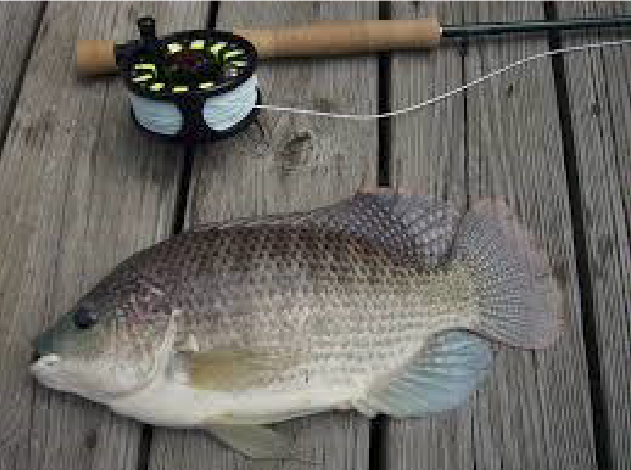
Tilapia
Tilapia is the name given to several species of freshwater, aquafarm -raised fish bred worldwide. They grow quickly in warm water, reaching about 3 pounds (1.3 kilograms); they are available whole or filleted, fresh or frozen. The flesh is similar to catfish - lean, white and sweet, with a firm texture. Tilapia are sometimes marketed as cherry snapper or sunshine snapper, even though they are not members of the snapper family
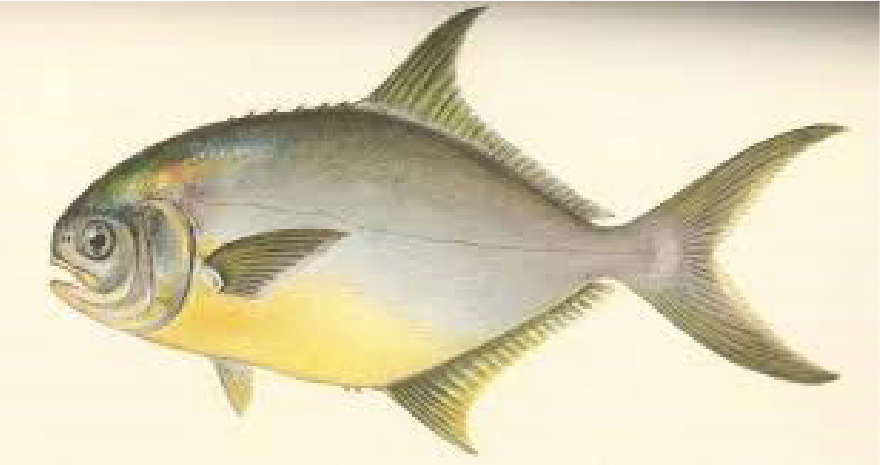
Pompano
The Atlantic pompano has been described as “the world's most edible fish.” The attractive, silvery skin is edible and does not require scaling. Pompano meat is firm but finely flaked, with a sweet, mild flavor. The flesh is pearly white, with a moderate fat content, and cooks up white. The Florida pompano (Trachinotus carolinus) is a species of marine fish in the Trachinotus (pompano) genus of the family Carangidae. It has a compressed body and short snout; coloration varies from blue-greenish silver on the dorsal areas and silver to yellow on the body and fins. Pompano contain phosphorus, vitamin B1, B12, copper, vitamin A, and potassium in high sizes. In addition, pompano is also high in amino acids, antioxidants, and large amounts of protein.
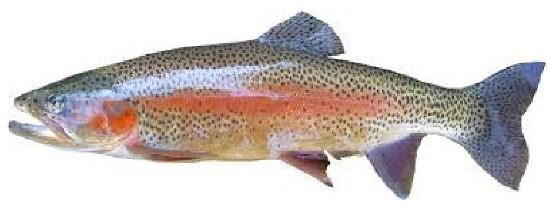
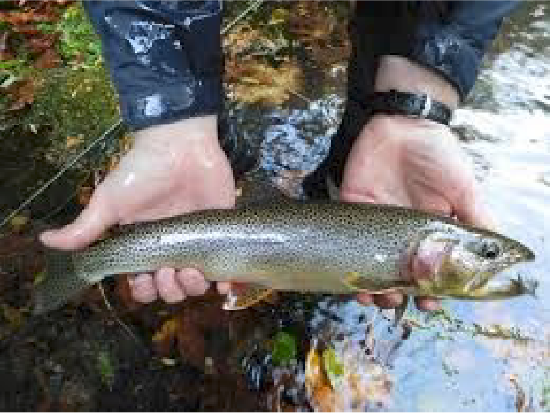
Rainbow Trout Lake Trout
Trout are members of the salmon family. Most of the freshwater trout commercially available are aquafarm -raised rainbow trout, although brown trout and brook trout are also being aqua- farmed. Some trout species spend part of their lives at sea, returning to fresh water to spawn. On the West Coast, these are called salmon trout or steel-head. Trout have a low to moderate fat content, a flaky texture and a delicate flavor that can be easily overwhelmed by strong sauces. The flesh may be white, orange or pink. Trout are usually marketed at 8 to 10 ounces (225 to 280 grams) each, just right for an individual portion. Lake trout, sometimes known as char, are not aqua-farmed and have little commercial value because of their extremely high fat content. Trout can be baked, pan-fried, smoked or steamed.
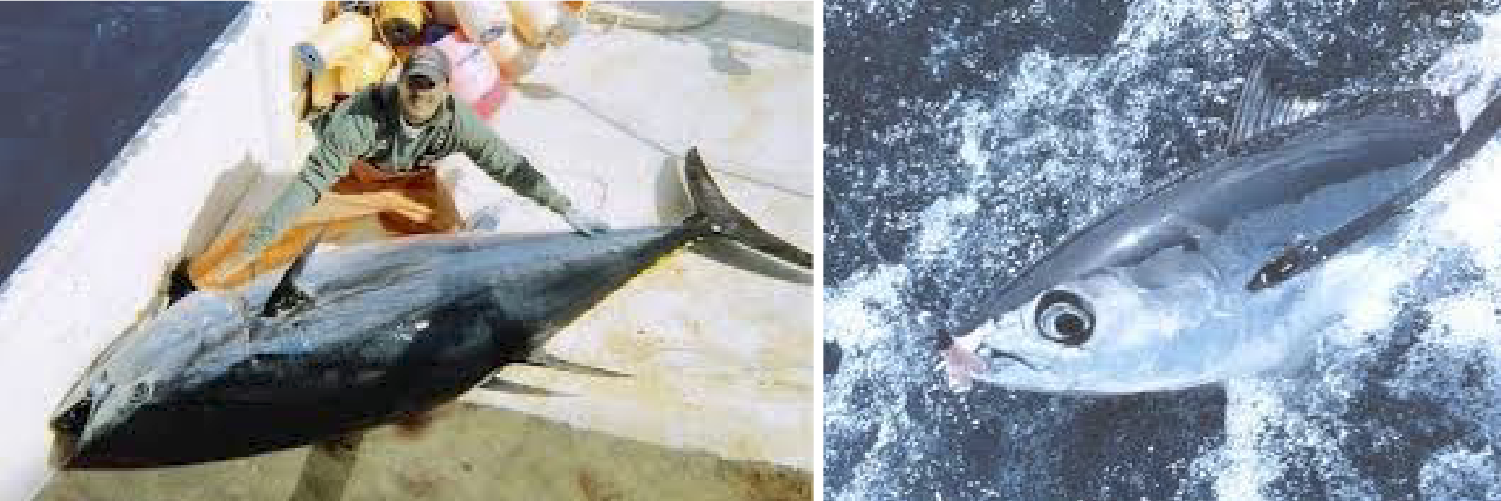
Bluefin Tuna Albacore Tuna

Yellowfin Tuna Bonito Tuna
Tuna varieties include the Bluefin, yellow fin, bonito, bigeye and black fin. Ahi is the popular market name for either yellowfin or bigeye tuna. All are members of the mackerel family and are found in tropical and subtropical waters around the world. Tuna are large fish, weighing up to several hundred pounds each. Bluefin, the finest and most desirable for sashimi, are becoming very scarce because of overfishing. Regular canned tuna is usually prepared from yellowfin or skip jack; canned white tuna is prepared from albacore, also known as longfin tuna. Pacific tuna that is frozen at sea to preserve its fresh - ness is referred to as clipper fish. Any of these species may be found fresh or frozen, however. Tuna is usually cut into four boneless loins for market. The loins are then cut into steaks, cubes or chunks. The flesh has a low to moderate fat content (a higher fat content is preferred for sashimi) and a deep red color. The dark, reddish -brown muscle that runs along the lateral line is very fatty and can be removed. Tuna flesh turns light gray when cooked and is very firm, with a mild flavor. Tuna work well for grilling or broiling and may be marinated or brushed with seasoned oil during cooking. Tuna are often prepared medium rare to prevent dryness.

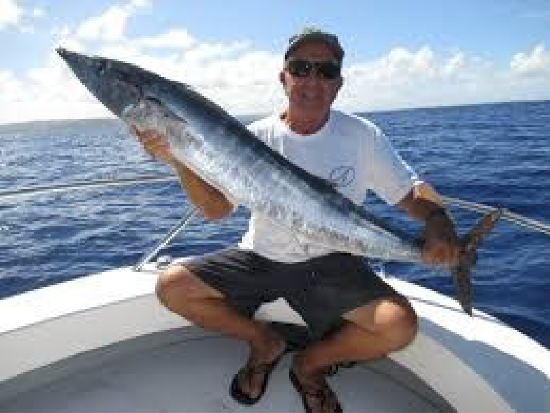
Wahoo
Wahoo, also known as ono) are found throughout tropical and subtropical waters, but are particularly associated with Hawaii (ono even means "good to eat" in Hawaiian). They are actually a type of mackerel and are cooked like any other mackerel
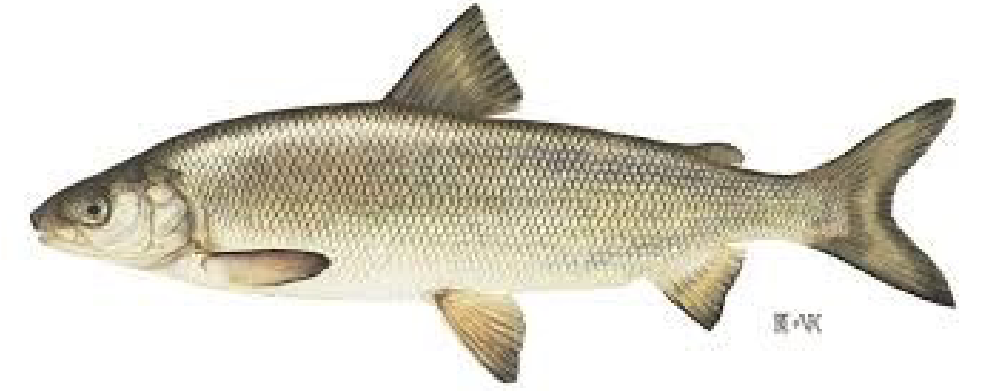
Lake Whitefish
Whitefish species inhabit the freshwater lakes and streams of North America. Lake Whitefish, the most important commercially, are related to salmon. They are marketed at up to 7 pounds (3.2 kilograms) and are available whole or filleted. The flesh is firm and white, with a moderate amount of fat and a sweet flavor. Whitefish may be baked, broiled, grilled or smoked and are often used in processed fish products.


